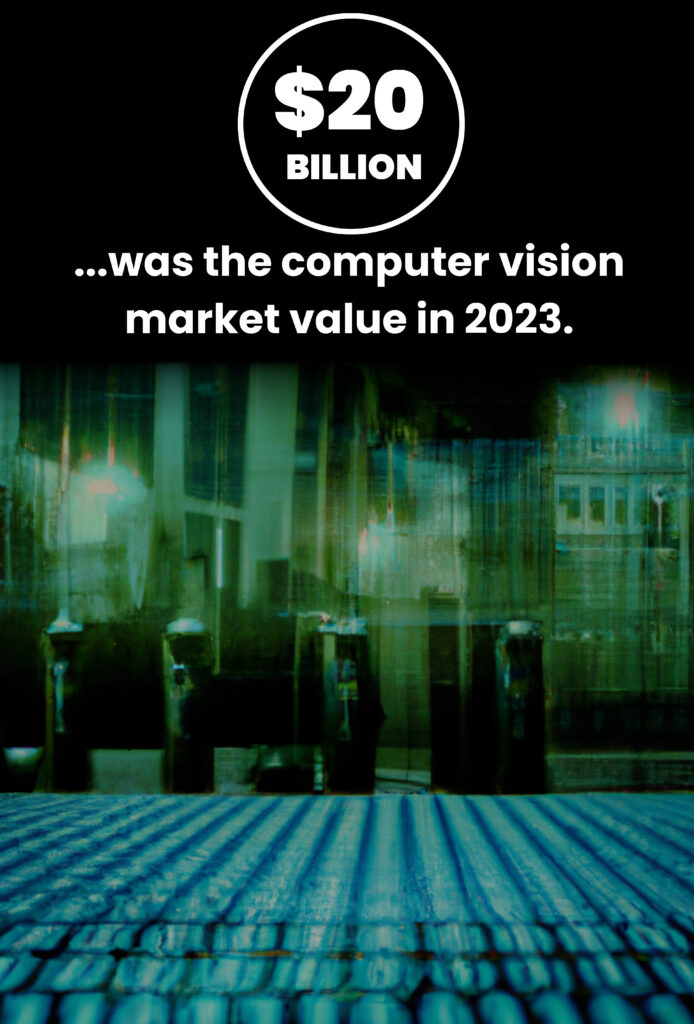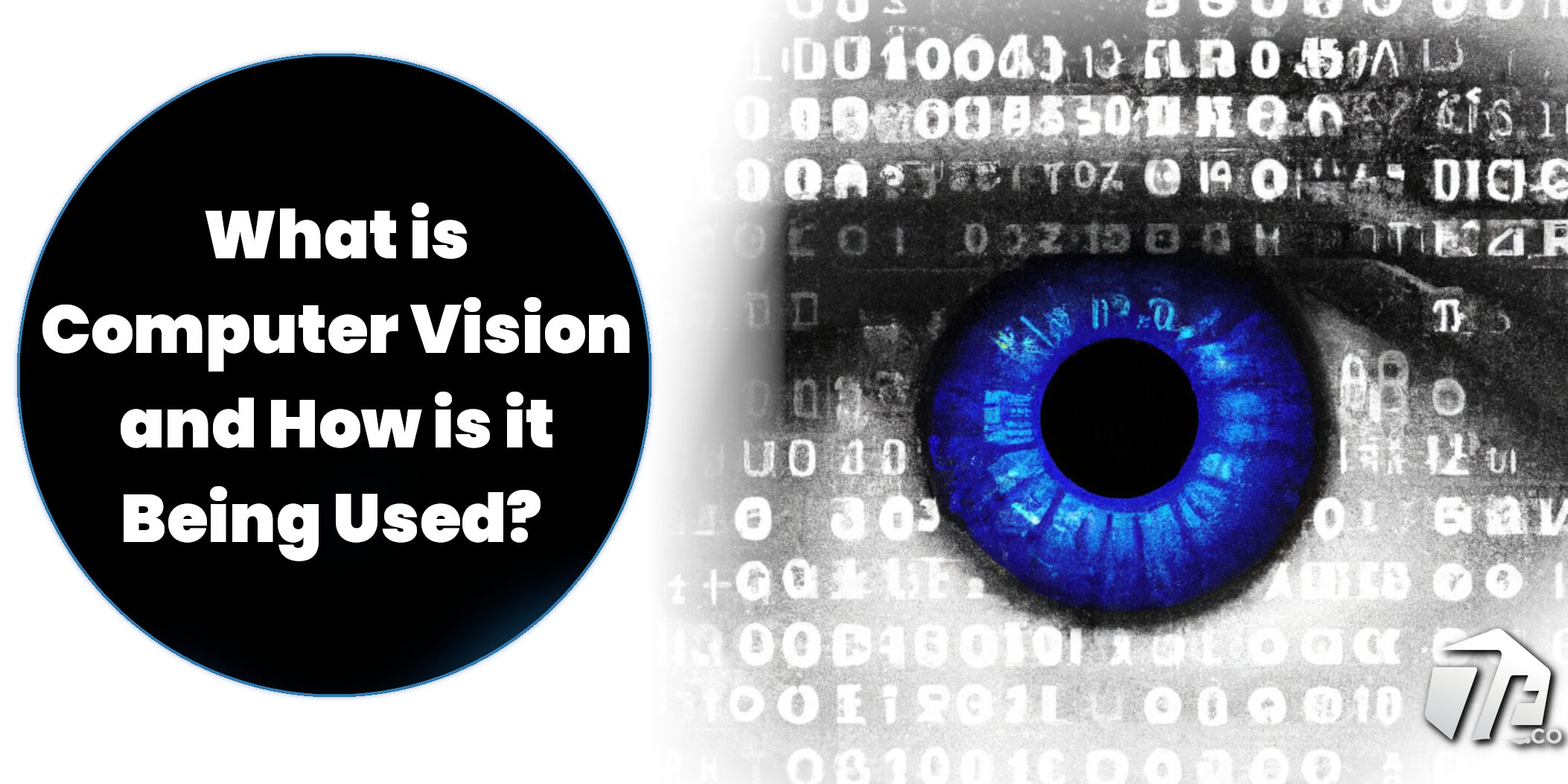Artificial intelligence has been thrust into the mainstream, with new forms of AI technology emerging at a rapid clip. Computer vision AI, also known as visual AI, is one form of artificial intelligence that has garnered a great deal of attention thanks to its ability to mimic the human brain and the manner in which it takes in and acts upon visual information. But what is computer vision AI, exactly? And what does it all mean for individuals and organizations that are planning to leverage AI for their next project?
What is Computer Vision AI?
Computer vision AI is a relatively new form of artificial intelligence, which leverages technology that is developed using the human visual system as a guide. As such, visual AI can be used to identify objects within an image and then take action in response to “viewing” that imagery.
Computer vision AI can be leveraged in a few different ways:
-
-
- Object detection and recognition.
- Anomaly identification to detect defects and flaws.
- Item inspection, which is used to determine the object type / categorization and quality assurance.
- Item segmentation, which is used for a more comprehensive evaluation of an object.
-
How is Computer Vision AI Used? – Visual AI Use Cases

Retail innovator Amazon recently unveiled computer vision technology that eliminates the need to scan items and present a payment method in-store. The Amazon shopper simply walks into the store, selects the item(s) they wish to purchase, and then walks out of the store. Meanwhile, the AI technology identifies the shopper and the items they selected; then the Amazon customer’s on-file payment method is charged accordingly.
The retail and manufacturing industries aren’t the only ones using computer vision technology. The healthcare industry is starting to use visual artificial intelligence to identify signs of illness or an injury in radiographs (x-rays), CT scans or MRIs. This tech can also be used to pinpoint trends and patterns that may otherwise prove elusive to even the most adept human analyst. As such, there exists the potential for new medical insights and discoveries.
Law enforcement can use computer vision to identify suspects who refuse to provide information on their true identity. Computer vision could also be used to identify suspects in footage from surveillance cameras and community cams.
The automotive industry is speeding the vehicle inspection process as new cars, trucks and SUVs roll off the assembly line. In fact, one study found that computer vision technology had a more than 95% success rate for the real-time identification of defects or flaws in vehicles as they progressed down the assembly line.
These are just a few of the many industry-specific deployments of computer vision AI. This technology is ideal for virtually any situation where there is a need for identification and / or analysis, which is then used to make a decision such as what steps to take in a process.
Development Techniques for Computer Vision AI
Artificial intelligence developers are using a few different development techniques, with new approaches emerging at a steady clip as new, innovative uses arise.
“These techniques are applied in various configurations depending upon the specific requirements of the inspection task, such as speed, accuracy, and the nature of the items to be inspected,” explained 7T President and COO Shane Long. He added, “Integrating these solutions effectively can lead to substantial improvements in quality control and operational efficiency.”
Here is a look at some of the computer vision AI development techniques that we’re using here at 7T.
Convolutional Neural Networks (CNNs) represent a core technology for image recognition and classification. CNNs process pixel data and identify the objects within an image, making this technology ideal for item inspection, defect detection and other quality assurance tasks.
Region-based CNNs (R-CNNs) are also used for object detection and recognition in conjunction with single shot detection (SSD) and you only look once (YOLO) technology. These forms of visual AI are ideal for identifying highly-specific components or aspects within an image. As such, R-CNNs, YOLO and SSD technologies are a good pick for pinpointing product defects or locating specific items within a digital visual field.
Image segmentation can be performed using Mask R-CNN and U-Net technologies, which split an image into defined regions or segments. Those image segments can then be evaluated using computer vision AI to detect defects. In fact, our next approach for computer vision AI development is highly effective for anomaly detection.
Generative Adversarial Networks (GANs) and auto-encoders are also well-suited to anomaly detection, as the technology’s machine learning algorithm is trained to recognize the normal appearance of an object; it then flags any items that deviate from that norm.
Transfer learning leverages pre-trained machine learning models that can be fine-tuned to evaluate massive datasets. This AI development technique can cut down on the amount of time and data that’s typically required for inspections and other similar tasks.
Hiring a Top Dallas Computer Vision AI Development Company
At 7T, our development team is on the cutting edge of artificial intelligence, including computer vision AI technology. Visual AI capabilities can be integrated into virtually any development project, whether it’s an enterprise software solution, an innovative mobile app for your business, a web app platform or process automations.
The potential for computer vision AI is exciting and 7T now specializes in artificial intelligence development solutions — including computer vision — for clients in all industries and business spaces. Our world-class team of Dallas AI developers will work to identify challenges within your organization; then, we’ll create a value-generating solution with innovative technologies that align with your business strategy. This problem → solution approach to computer vision AI development has the potential to bring exceptional results, while also generating new, profitable opportunities for your organization.
7T’s AI development team is guided by the approach of “Digital Transformation Driven by Business Strategy.” As such, the 7T team works with company leaders who are seeking to solve problems and drive ROI through Digital Transformation with innovative business solutions such as AI implementations. 7T is based in Dallas, with additional locations in Houston, and Charlotte, NC. But our clientele spans the globe. If you’re ready to learn more about computer vision development, contact 7T today.










